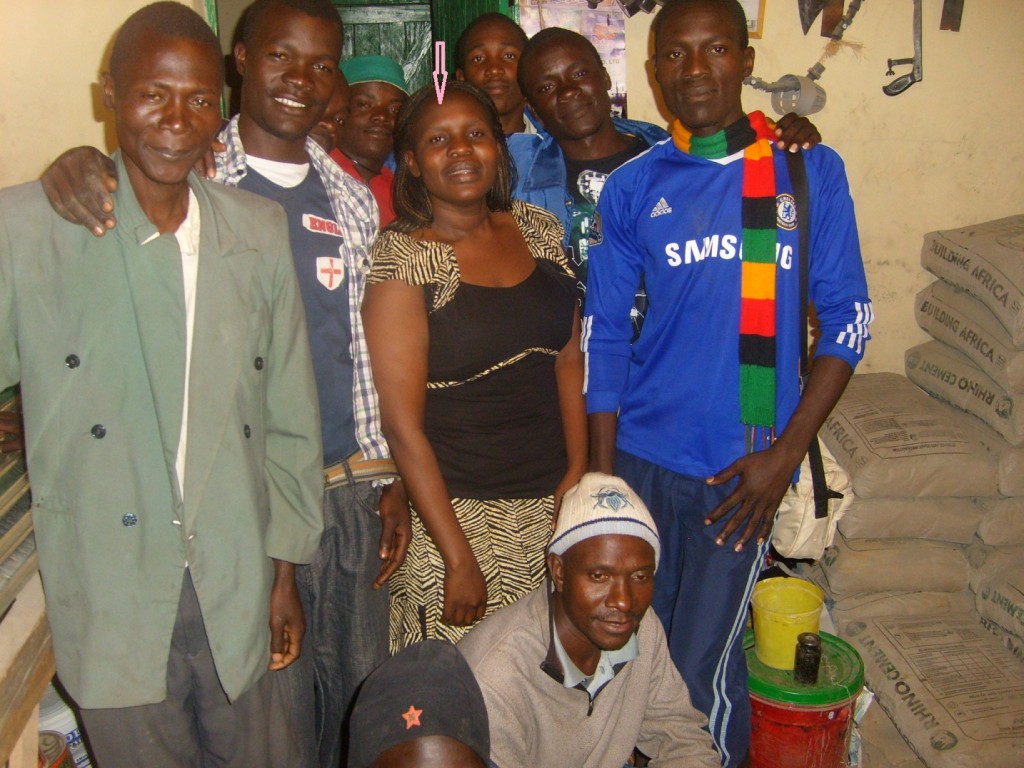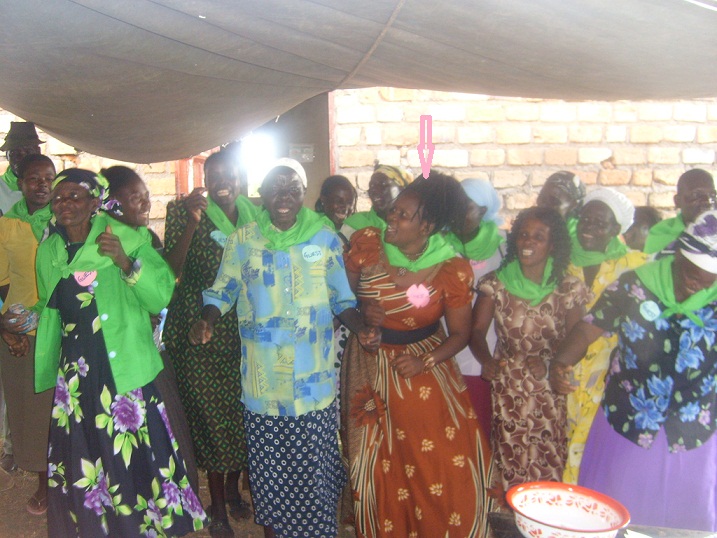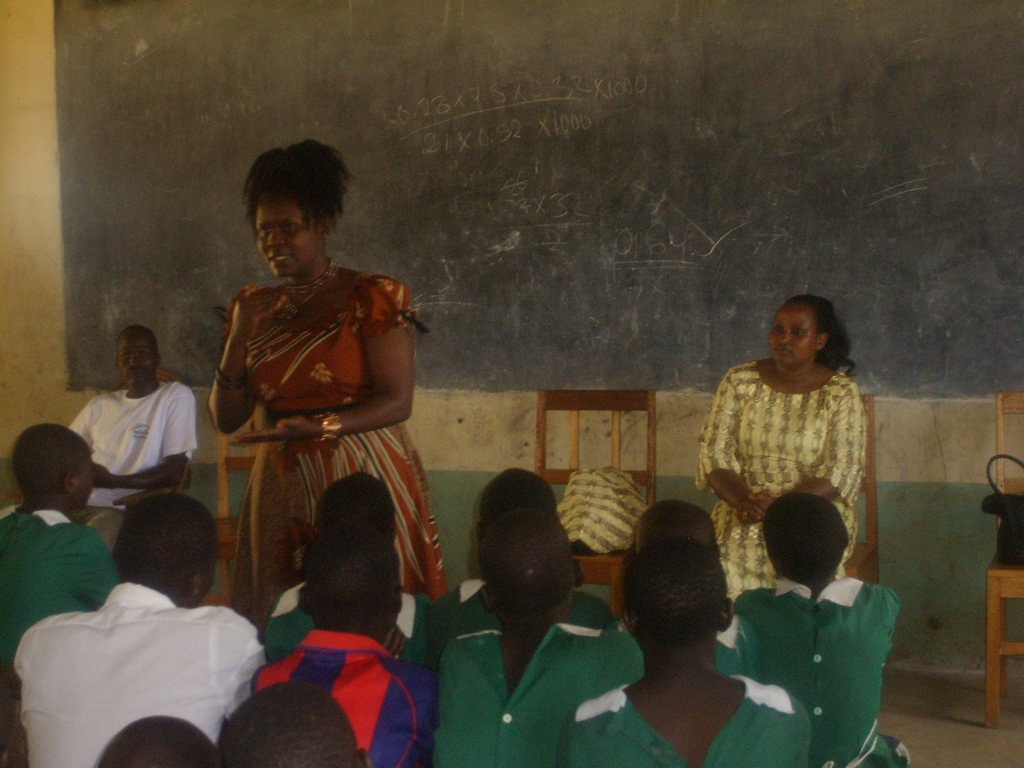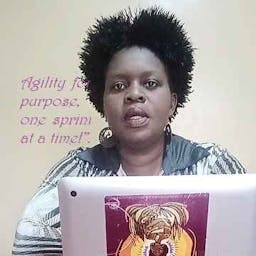In the Battlefront: From the Community War to the Family War on HIV/AIDS
Jan 21, 2015
Story




After the burial, I sat in my room to listen to soothing churchy tunes. The music; whether the vibrations or the exertion of creation had left an immeasurable physical effect on my body. I suddenly felt strong. Through this serenity my mind traveled to the days I invited my younger brother to live with me in the city of Nairobi. He had dropped out of school when he was left with one year to complete high school. I convinced him to go back to school. He accepted and enrolled for the final year so that he could sit for his examinations while staying with me. His performance was dismal. Hence, he opted for casual jobs at home. Months later, I was informed that he had gotten into drinking illicit local brew. My efforts of talking to him regarding drug and alcohol abuse fell on deaf ears.
Three years later, our mother informed me that he was suffering from boils on both legs and could not walk. He had been on traditional herbal therapy for two weeks without improvement. I suggested that he be hospitalized. I squeezed time from my usual busy schedule and visited him at the hospital. He was delighted to see me. I saw the pleasant boy I use to know since we were children; jolly, nice, loving and tender. We talked at length and he promised never to touch alcohol again. I recall this moment as if it happened yesterday. It was on 23.11.2011. I was just leaving my brother’s bedside when he called me back and whispered in my ears. 'Siste please buy for me shoes; look at how my shoes are torn!’ He bent down and showed me the torn shoes’. Immediately, I saw an opportunity to motivate him to change. I repeated my earlier words 'Bro if you quit drinking and refocus on your life, you will bring a bigger change to yourself’. ‘I will never drink again’. He promised. I told him to wait until 10th of December so I could bring him shoes from Addis Ababa where I was to attend African HIV/AIDS conference known as (ICASA). A friend had mentioned that the quality of the shoes were affordable in Addis Ababa Ethiopia.
I vividly recall 30th November, 2011. I received a call from my sick brother at mid-day 'Siste remember the shoes on 10th December’. Two hours later, our mother informed me that he had passed on. ‘Yes, he was dead!’ I cried bitterly on receiving the news. I had many questions and anger. My brother, hardly 24 years old had died. What we thought were normal boils turned out to be HIV/AIDS complications- Kaposi’s sarcoma!
Everyone is somehow infected or affected by the HIV/AIDS pandemic in Kenya …yet the stigma remains. The Microsoft Word Dictionary defines stigma as the shame or disgrace attached to something regarded as socially unacceptable. Sociologists have taken this a bit further. In a seminal study on stigma in 1963, stigma was defined as an attribute that is seen as deeply discrediting to a person or group (Goffmann, 1963). Stigma has claimed many lives of people infected with HIV/AIDS; however, the stigma can be addressed and eventually be eliminated by: friendlier youth services, educational programs for youth, support groups and a political voice that acknowledges the problem. This is also echoed by UNAIDS when they state: Eliminate stigma and discrimination against people living with and affected by HIV through promotion of laws and policies that ensure the full realization of all human rights and fundamental freedoms (UNAIDS, 2006).
Kenya recorded its first HIV case in 1984, since then the AIDS epidemic has evolved to become one of the central impediments to national health, well being and development. HIV/AIDS in Kenya has deepened poverty, slowed economic growth and has affected women, children and youth to a larger percentage. As of December 2011, 1.6 million people were living with HIV in Kenya, 33% of whom are the youth (NACC, 2012). This number is a clear illustration that the virus has spread beyond discrete groups that affect the whole of society. Many infected people are still stigmatized and discriminated. The late checkups are primarily due to stigma (Murphy, 1995). It often sounds like any other statistics until it is closest to you!
The reality of my brother’s death let me to retrace my experiences around HIV/AIDS. My mind rolled to 2008 during my sister-in-law’s (our spouses are brothers) burial. She had died of AIDS which were highly due to stigma, suffering, shame, and silence. I was given a chance to give my eulogy. For a moment, I was lost with words. However, when I started speaking, I found myself addressing issues of HIV/AIDS and how it is mired with a lot of stigma and silence, including the culture of wife inheritance perpetuating spread of HIV/AIDS and high school dropout rates for both boys and girls. I also talked of how we can come up with strategies of minimizing HIV spreading and stigma and helping the victims seek for medical attention. I saw mixed reactions from the crowd during my speech. I knew it was because they had expected me to add on to the heap of praises that had already been said of the deceased. Others were shocked at such openness on an ‘unspoken topic’. Still, others looked deep in thought. This speech gave birth to Ramula HIV Support Group. This group focuses on enlightening the community on HIV/AIDS thereby eliminating stigma. The group has also assisted the group members establish economic support unit of commercial farming.
I sobbed even more as I reflected on all these. How could my own brother die of HIV/AIDS when I am communicating with the public, researching and training on HIV/AIDS? I thought and reflected on the trainings that I have been conducting on HIV/AIDS in various parts of the country since 2006. I have been carrying out trainings, workshops, conferences and seminars to health workers, community health workers, community members and other members of various HIV support groups on HIV/AIDS. I have been a consultant for Actionaid International, AMREF and Medicine San Frontiers-Belgium on HIV/AIDS, Gender Based Violence and leadership. I am also a member of a global movement on health issues known as People’s Health Movement. Many a times I would carry out programs on emerging issues on HIV//AIDS, including gang rape in the Kenyan local FM stations such as KBC and Waumini FM. I have carried out surveys and I have conducted extensive research on HIV/AIDS.
Also, I have presented some of these researches at local and international forums. All these were done to sensitize community members on HIV/AIDS. Nevertheless, at home I had done nothing…I felt pained! It is human nature that we often think that the problem is out there and bad things can not affect our inner circle. My brother’s death brought the urgency in my heart to give my little contribution on the issue of HIV/AIDS in my village. You see, no one knew of my brother’s HIV status. I thought it was just alcoholism that had made him emaciated. His death shocked our entire family. My dear brother died without disclosing to anyone his HIV status or maybe he wasn’t aware of it. I don’t know. But what is so apparent is stigma was key to my brother’s death!
Coincidentally, my brother was buried on 10th of December 2011. This was the same date that he kept reminding me to buy for him shoes. I bought the clothes he was buried in including the shoes. My brother’s death was the real battle on HIV right in the family! I felt so disturbed and I kept blaming myself that I should have done this or that to avert this situation. Finally, I too decided to wear new shoes and do something instead of blaming myself endlessly. Together with my friend Milcah, we had formed an organization called Supporters of the Youth Worldwide (SOY-Worldwide) in 2006. The purpose of this organization is to empower and support the youth by creating an awareness of their human rights, promote their sexual and reproductive health and rights (SRHR) through educational programmes, HIV/AIDS support programmes and entrepreneurial training. These programs were carried out to the youth of Mathare slum Nairobi and Machakos. In the month of May, 2012 I took a program within SOY-Worldwide to my home village, targeting youth on issues of drug abuse, alcoholism and HIV/AIDS. My brother’s case made me look at the social determinants of HIV/AIDS. I saw a co-relationship between drug abuse and alcoholism and HIV/AIDS among the youth.
According to NACADA (National Campaign against Drugs Abuse) authority Kenya, 75% of Kenyan population is made up of young people below 30 years. The youth currently make up 33% of the Kenyans infected with HIV/AIDS. Young women 15-24 years are three times more likely to be infected with HIV/AIDS than men of the same age. Among students research shows that 75% have tried alcohol at least once. Statistics have also revealed that approximately 2/3 of out-of school youth reported they had ever had sex. Male youth were more likely to have had sex than female youth. Out-of-school youth in rural areas were more likely to have had sex (76%) than their urban counterparts (57%). Condom use among out-of-school youth during the first sexual intercourse was low, especially among males (NACC, 2012). In summary HIV/AIDS among the youth could be attributed to various factors; drug abuse, alcoholism and social behaviour (NACADA). This calls for concerted effort to address the root courses of the spread of HIV/AIDS in the society. When I initiated SOY-Worldwide I was just adding the effort of addressing the issue of drug abuse, alcoholism and HIV in my area.
SOY-Worldwide has made a big change in my village. It is working closely with the youth with the core mandate of drugs and substance abuse prevention, education & communication on HIV/AIDS, rehabilitation and training while contributing to HIV/AIDS risk reduction. Currently SOY is running outreach program for the youth in my village. This program is attracting many youths both boys and girls who are infected by HIV. Many of these youths were dieing in silence without a friendlier service provider to turn to.
The main vision of SOY-Worldwide is to create youth friendly services in addressing youth issues and pave a path for better leadership in the future and making the youth own issues that affect them in the society. Change is inevitable and the young people tend to embrace it better than the older generations. Our society needs young people who are change driven so as to change the status quo that has prevailed for a long time. It’s until we involve the youth who form a larger population in Kenya that meaningful change will be realized. For all these to happen we need sober, focused and healthy youths!
Through my brother’s death I was able to initiate this noble course of assisting the youth in my village. I appreciate that change is gradual. Gradual as it may be, I am doing my part in contributing to attaining zero HIV infection, zero stigma and zero deaths due to HIV/AIDS.
This article is part of a writing assignment for Voices of Our Future a program of World Pulse that provides rigorous digital media and citizen journalism training for grassroots women leaders. World Pulse lifts and unites the voices of women from some of the most unheard regions of the world.




